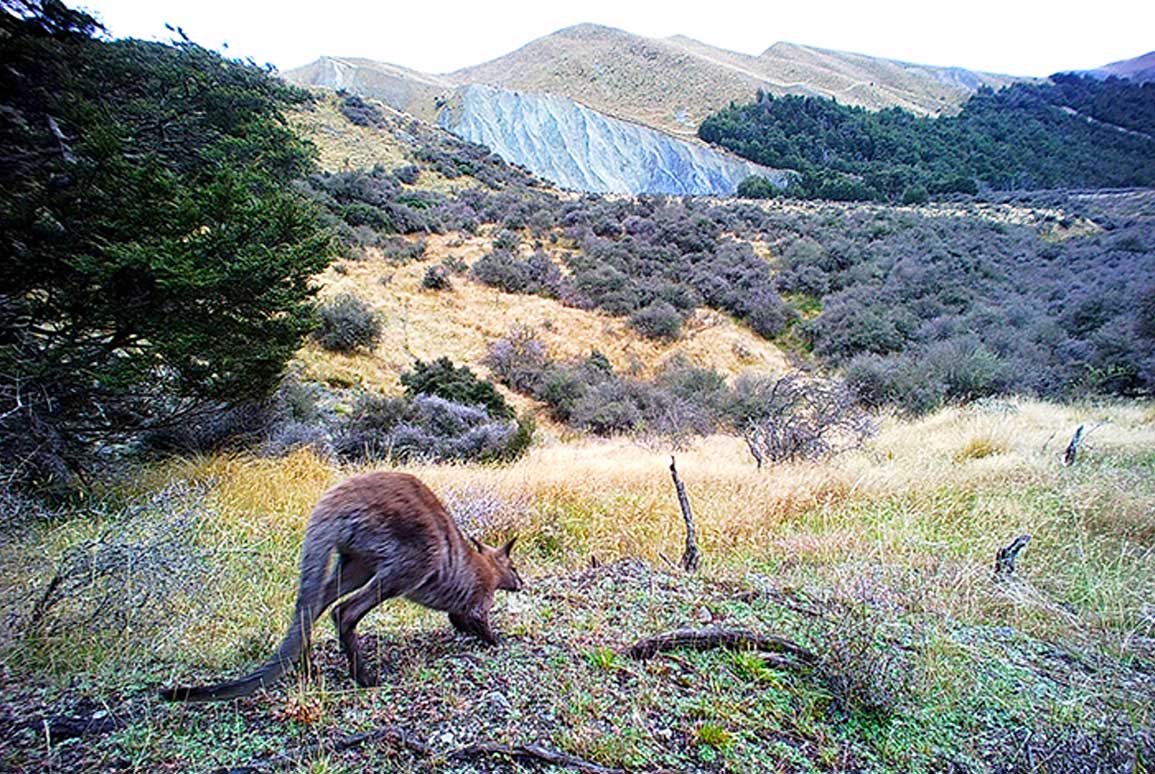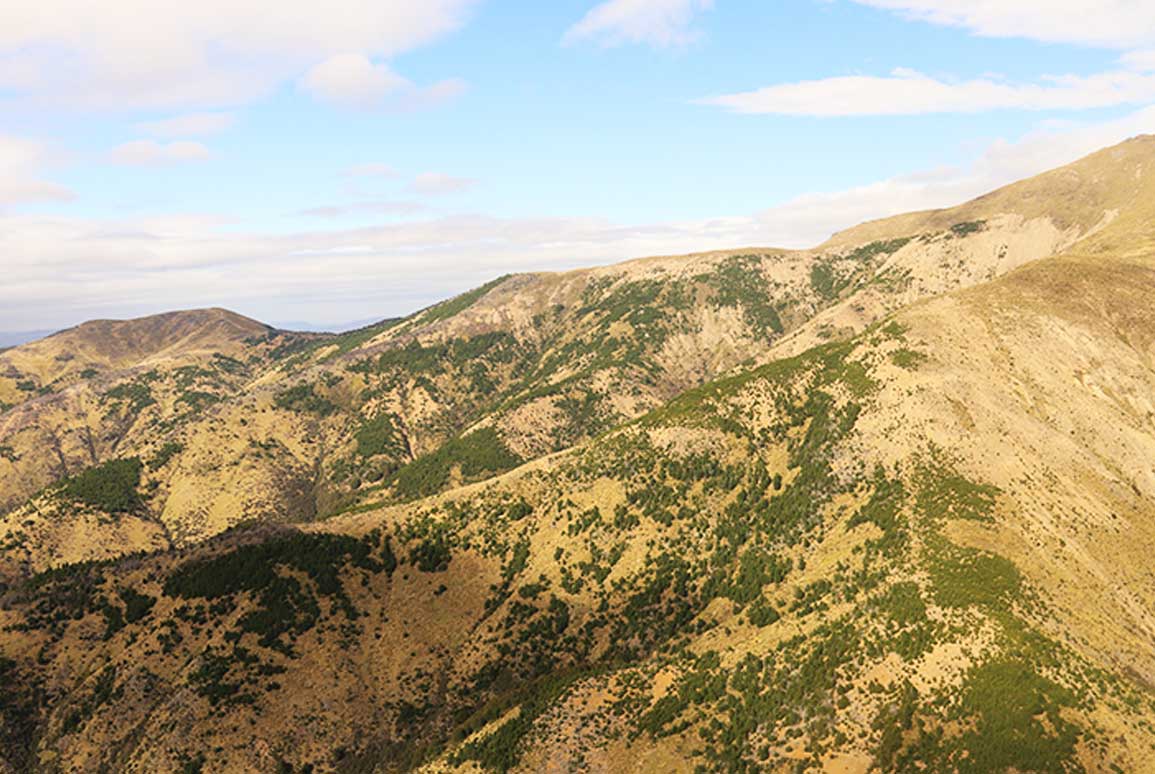Opinion: Are invasive species being taken seriously, or are poor decisions costing the country?
9 July 2019
New Zealand is home to a mosaic of invasive species all across the landscape, and all at differing stages of the invasion and establishment process.

New Zealand is home to a mosaic of invasive species all across the landscape, and all at differing stages of the invasion and establishment process. When new incursions of an invasive species to our shores are detected early, rapid responses can prevent their establishment (e.g. painted apple moth). However, this response is less common when already established species disperse into new parts of the country.
Invasive species are those that are proficient at dispersing into and colonising new areas. The cost of this range expansion is two-fold: direct control costs and indirect costs (loss of agricultural production and/or biodiversity values). Complete removal of a species from a newly invaded area often requires long-term, intensive, and collaborative control from adjoining land managers and community stakeholders. Such efforts are often viewed as cost-prohibitive, and may be non-viable due to socio-political factors or limitations in detection/control technology.
Where the limitation is cost of control, it is important to understand the costs associated with long-term management of invasive species. An accurate understanding of those costs may demonstrate that early eradication is by far the most cost-effective means of control in the long term.

New budgets for wilding conifers and wallabies
Wilding conifers and feral Bennett’s wallabies are two species currently in the political spotlight. The National Wilding Conifer Control Programme (NWCCP), aimed at combating the evident range expansion of wilding conifers, was awarded additional government funding for the next two financial years in Budget 2019. The rationale for additional funding was clear: cost-benefit analysis showed an estimated benefit of $38 for every $1 spent on conifer control. However, the funding received was a fraction of what was requested, and a fraction of what is needed to effectively reduce the spread of wilding conifers.
On the other hand, the bid for a national wallaby control programme, aimed at targeting wallaby populations in both the North and South Islands, was unsuccessful. This may have been a surprise to the collaborative bid team, which included LINZ, DOC, regional councils and the Ministry for Primary Industries (MPI). MPI’s 2016 report estimated the annual cost in lost agriculture revenue associated with wallabies in the South Island was $23.7 million. Moreover, the estimated cost is predicted to triple to $67 million by 2026, if wallabies continue to spread without active management. In contrast, the cost of control is estimated at $6.2 million per annum.
Given the clear on-paper cost-benefit ratio, even a modest initial spend to create a national programme to centralise knowledge of wallaby distribution, surveillance and research to better understand the issue is probably justified. This approach was used in the NWCCP, where initial budgets were used to set up the programme and begin research and control. The budget increased when it had been demonstrated that funding was being used efficiently and providing beneficial results for conifer control. This upscaling also allowed for growth in the industry, including collaborative working relationships between agencies and landholders, increases in contractor capacity and experience, and control at high priority sites.
The biggest surprise with the failed wallaby control bid is the lost opportunity: it seems inevitable that a National Wallaby Control Programme will be funded at some point in the future, but by then costs will have compounded significantly. A focus on developing methods to prevent dispersal beyond current wallaby feral range boundaries is needed; they have spread south and west of the containment boundaries, and are now being detected outside the northern containment boundary as well. Recent records of wallabies north of the containment area are by chance, and focused wallaby surveillance in these areas may have detected wallabies much earlier. Recent research by Boffa Miskell has shown that wallabies are consistently detected using focused surveillance methods even in areas where landholders, hunters, and trampers frequently visit, but these groups are not often observing evidence of wallabies. If low-density buffers were maintained within wallaby containment boundaries, and surveillance had been carried out outside the containment area, it is possible that the spread of wallabies could have been prevented. To control all wallabies back to the containment area will now be a multi-million-dollar project.

Solutions
It is important that decision-makers understand and make decisions based on long-term costs. We need robust and transparent decision making and a better understanding of pest population dynamics and ranges in order to better identify and detect pest species early in the expansion process. If geographic range is expanding in areas where control is occurring, it is likely more resources or a change of approach are required. Where possible, we must use defendable boundaries to slow the dispersal of pest species, and low-density buffers to reduce pressure on these boundaries.
The model for funding pest-species control has, to date, been based on funding the control of those species that have spread significantly and have begun incurring significant costs. A change of approach is required urgently, with a focus on research, proactive surveillance/control and early detection. To achieve this, and reduce long-term economic costs to the country, funding must be spent now to allow a cost-effective and proactive approach to species such as wallabies. Otherwise, future generations will foot an exponentially increased bill and our indigenous biodiversity will have growing pressures from the increasing presence of invasive species.

